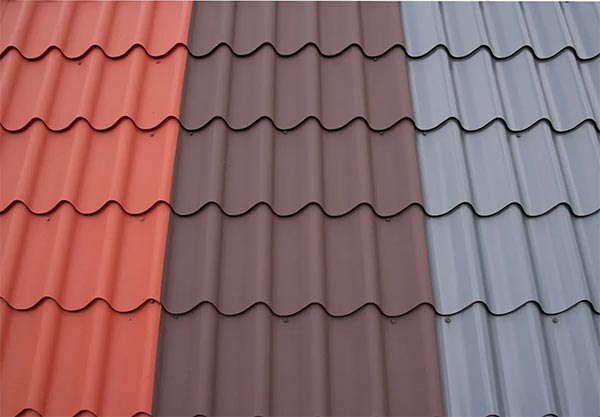Whether you’re fully replacing a roof or simply restoring it, you need to understand a little bit about how roof colors work. This can help you choose a color that matches your current roof well and know how much fading to expect over the years.

Here are some of the basics of how manufacturers colorize roof materials and how that affects your roof.
Methods of Colorizing
Different methods of adding color to roof material have different strengths and weaknesses. For instance, some may fade more easily than others. Here are some common methods of colorizing roof materials and how they compare to each other.
1. Mixed-in Color
Mixed-in color makes the roof material the same color all the way through. If you have a tile roof with mixed-in color, even if a top layer wears off, the roof will still be the same color underneath.
However, this doesn’t mean the tile can’t fade at all. A concrete tile with mixed-in color may fade slightly more than a comparable clay tile. The layer of pigment that’s exposed to the weather may simply soften a bit from the UV exposure and other harsh weather conditions it’s ex-osed to.
2. Colored Granules
Adding colored granules to a roof material can also affect color. An asphalt shingle has reflective granules on the surface, so adding color to just the granules can be one way to colorize it. As you can imagine, this method means the roof’s color may fade if many granules are lost. The pigments in the granules can also fade from UV rays, like the pigments in a tile roof.
3. Colored Coating
A colored coating is a common way to color roof materials such as metal. After all, the metal typically needs a protective coating anyway, so why not offer different colors of coatings? Tile roofs may also come with a colored coat in some cases, also called a color-slurry coat.
The drawback of the coating method is that the color may need to be refreshed periodically. However, cosmetic blemishes to the coating could also serve as a good reminder that your roof’s protective coat needs a touch-up.
Considerations When Choosing Between Methods
Choosing your ideal roof product requires you to take a lot of factors into consideration. You may wonder how exactly the method of colorizing a roofing material affects your roofing choices. Here are a few practical considerations as you compare different roof products with different types of colorization.
1. Maintenance
The types of roof color used can affect the performance and maintenance of your roof. For instance, tile roofing can come with either a mixed-in color or a coated-on color. A coated-on color may need to be re-coated or re-painted, whereas a mixed-in color won’t. Coatings such as those used on metal roofs also need periodic refreshing.
2. Color Availability
While many colors are available in today’s roofing materials, not all colors are available in all materials. The desired aesthetic for your roof may be easier to achieve with one type of coloring than another (slurry coatings work better for bright colors than mixed-in color does, for example).
And if you want a roof that’s energy-efficient, you may want to choose a material that comes in a variety of light colors (which are typically more reflective), such as metal or tile.
3. Matching Colors
Matching colors for a roof repair can be tricky with some types of colorization. For instance, if you have a concrete roof with through-coloring, it will likely be a softer shade after a few years, and you may need to select a lighter color to match. Coatings that have to be refreshed every few years make color matching easier, because you can just re-coat after the repair.
Your roofing contractor can also help you compare colors, different methods of coloring roof materials, and the roofing materials themselves so you can choose the best overall product for your roof. Whether you need a whole new roof or whether you need help with color matching for a roof repair, get in touch with Done Right Home Improvements, today.

